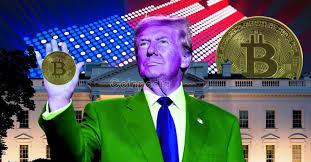The executive order (E.O.) signed by President Donald Trump on 6th March 2025, creating a US Strategic Bitcoin Reserve and Crypto Asset Stockpile, is a historic move that marks a significant change in how the federal government handles digital assets. Because of this unprecedented move Bitcoin is now on the same level as strategic reserves like gold and oil. However, its implementation has caused debate, speculation, and confusion. Others say it raises more questions than it answers about government control, political motives, and the long-term effect on the market. Some see it as a big step toward making cryptocurrencies more legitimate.
Scheduled Bitcoin Reserve
The goal of the Strategic Bitcoin Reserve is to make Bitcoin a nationally important asset. This will make it even more valuable as a store of value and possible inflation hedge. But, despite what people initially thought, the US government will not directly buy Bitcoin for this reserve. Instead, it will only hold Bitcoin that has been taken by police, like Bitcoin that was seized after hacks on Silk Road and Bitfinex. This clarification let down many investors, as Bitcoin’s price went from over $90,000 to below $82,000 after the facts came out.
Though some disagree, using only stolen Bitcoin diminishes the reserve’s strategic purpose, rendering it more akin to a planned economic policy than a way to make money from legal seizures.
The Stockpile of Cryptocurrencies
This order from Trump also sets up a Crypto Asset Stockpile under the Treasury Department. This will hold other seized coins such as Cardano (ADA), Solana (SOL), Ethereum (ETH), and Solana (SOL). The Bitcoin Reserve doesn’t allow selling, but the stockpile’s purpose is still unknown, which raises worries that it could be used for future sales instead of long-term strategic holdings.
This Impacts Bitcoin’s Future
Trump’s Bitcoin Reserve is a big deal for digital assets in the US. It gives Bitcoin legitimacy in a way that no other government has done before. However, there are many open questions about the Crypto Asset Stockpile, the lack of active Bitcoin purchases, and the political effects.
Conclusion
There will still be much talk about the US government’s role in Bitcoin after Trump’s Crypto Summit on March 7, 2025. We don’t know yet if this move strengthens Bitcoin’s position in the financial system or creates more uncertainty.



